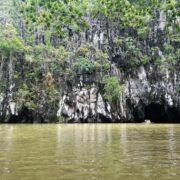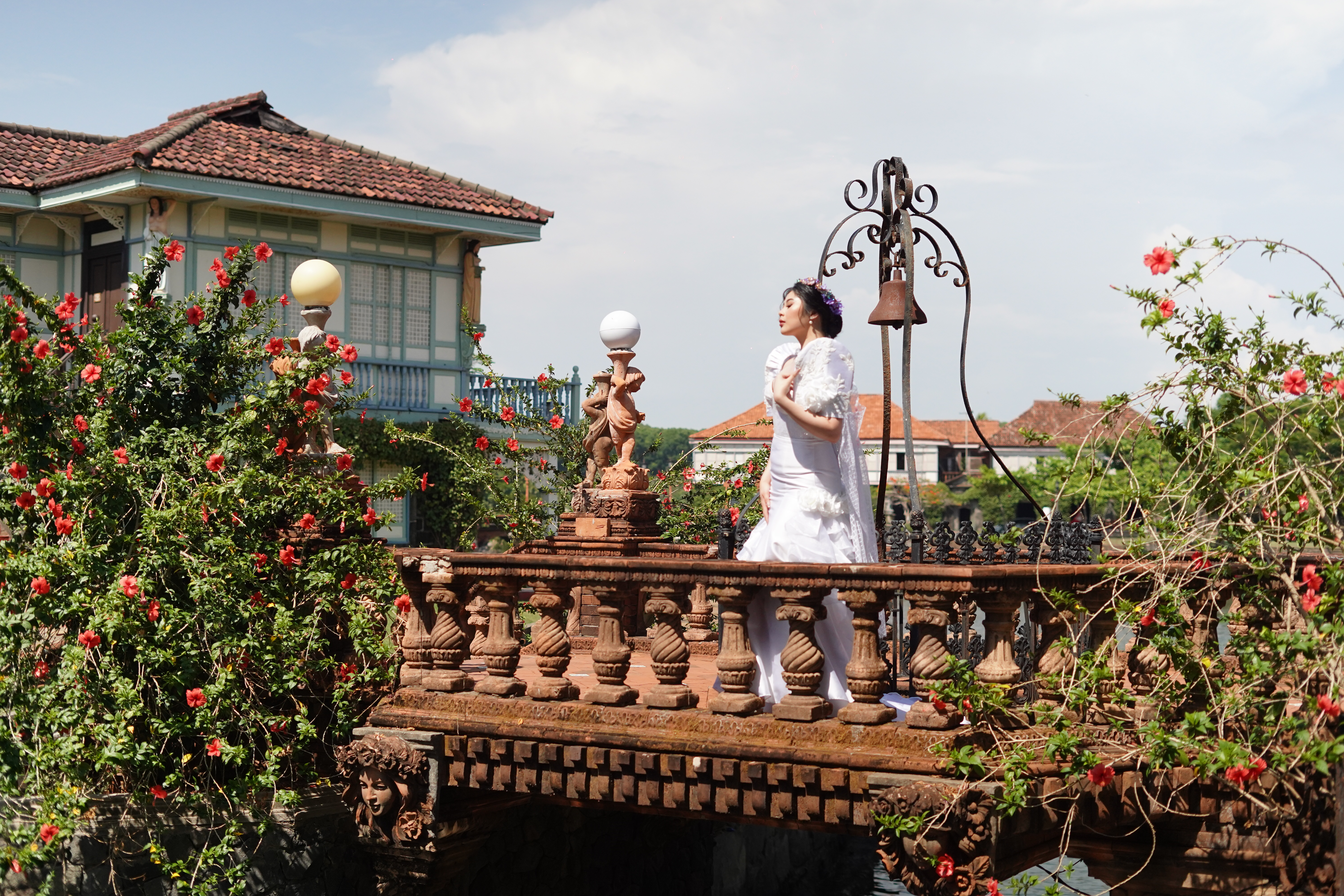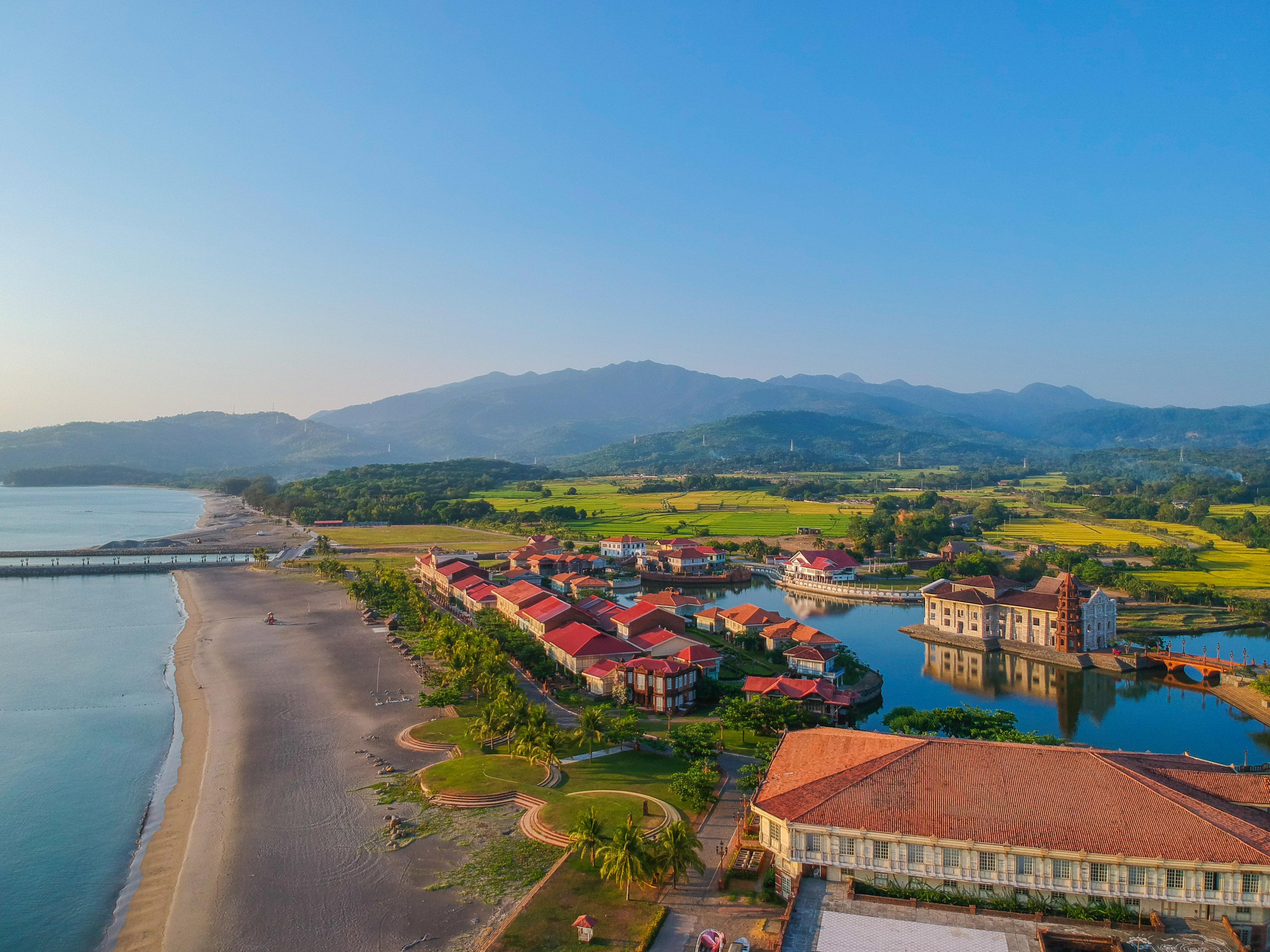 As dawn breaks over the lush forests of Palawan, a small group of visitors boards electric-powered boats, their excitement palpable. They’re about to embark on a journey through one of nature’s most captivating wonders: the Puerto Princesa Underground River. This subterranean marvel, recognized as one of the New Seven Wonders of Nature, continues to evolve, offering new experiences while striving to preserve its delicate ecosystem.
As dawn breaks over the lush forests of Palawan, a small group of visitors boards electric-powered boats, their excitement palpable. They’re about to embark on a journey through one of nature’s most captivating wonders: the Puerto Princesa Underground River. This subterranean marvel, recognized as one of the New Seven Wonders of Nature, continues to evolve, offering new experiences while striving to preserve its delicate ecosystem.
 NATURE’S SCULPTURE GALLERY
NATURE’S SCULPTURE GALLERY
The 8.2-kilometer river system winds its way through a labyrinth of limestone caverns, each turn revealing nature’s artistry. Stalactites and stalagmites, sculpted over millions of years, reach toward each other in an eternal dance of minerals and water. The cave’s recent lighting upgrades cast a soft glow on these formations, enhancing their otherworldly beauty without disturbing the cave’s inhabitants. As boats glide silently through the cave’s chambers, visitors are treated to a gallery of nature’s sculptures.
The “Cathedral Chamber,” the largest cavern in the system, awed with its soaring ceiling and intricate rock formations. The “Candle Room” features a massive formation resembling a melting candle, its wax-like appearance a testament to the slow, patient work of water and minerals over millennia. Further along, the “Holy Family” greets visitors – a group of stalagmites that, with a bit of imagination, resemble Mary, Joseph, and baby Jesus. The “Pegasus” formation spreads its rocky wings near the ceiling, while the “Naked Lady” reclines in stony repose, sparking conversations and inspiring wonder at nature’s artistic prowess.
 ECOSYSTEM IN THE DEPTHS
ECOSYSTEM IN THE DEPTHS
The river is home to a unique ecosystem. Bats hang in clusters from the ceiling, while swiftlets dart through the air, navigating by echolocation. In the crystal-clear waters below, endemic crabs scuttle across the riverbed, their presence a testament to the cave’s isolated environment. The local government of Puerto Princesa, in collaboration with environmental agencies, has implemented a series of measures to protect this natural treasure. Their goal is to balance tourism with conservation. They’ve introduced an advanced booking system to manage visitor numbers and reduce environmental strain.


BEYOND THE CAVE: THE SABANG MANGROVE FOREST
As visitors emerge from the underground river, blinking in the bright Palawan sun, their journey is far from over. The area surrounding the park offers a wealth of experiences that complement the subterranean adventure. Chief among these
is the paddle boat tour through the Sabang Mangrove Forest, a vital ecosystem that serves as a natural barrier against coastal erosion and a nursery for marine life. The Sabang Mangrove Forest, a sprawling 4,000-hectare haven of biodiversity, offers visitors an intimate glimpse into the intricate web of life that thrives in these brackish waters. As visitors glide silently through the narrow waterways in traditional paddle boats, they’re enveloped by a cathedral of green, the mangroves’ gnarled roots reaching down into the water like organic pillars.
The forest is a birdwatcher’s paradise. Keeneyed visitors might spot the vibrant plumage of the Palawan hornbill, hear the distinctive call of the Tabon scrubfowl, or catch a glimpse of the elusive Palawan peacock-pheasant. In the water, mudskippers dart across the surface, while fiddler crabs wave their oversized claws in territorial displays. Lucky paddlers might even spot a monitor lizard basking on a sun-warmed log or a troop of long-tailed macaques swinging through the canopy.For the truly fortunate, there’s a chance to glimpse the rare Palawan Mangrove Snake, its sleek body perfectly adapted to life among the twisted roots and brackish waters. This endemic species, with its striking pattern of dark bands on a lighter background, is a testament to the unique biodiversity of Palawan’s coastal ecosystems.
INDIGENOUS GUARDIANS: LOCAL TRIBES AND CONSERVATION
The preservation of this vital ecosystem is a collaborative effort, with local indigenous tribes playing a crucial role. The Tagbanua and Batak peoples, who have called this region home for generations, now serve as guardians and guides of the mangrove forest. Their intimate knowledge of the ecosystem passed down through generations, informs conservation efforts and enriches the visitor experience. These indigenous communities have implemented traditional sustainable fishing practices in designated areas
of the mangrove forest, demonstrating how human needs can be met without compromising the ecosystem’s health. They also conduct regular patrols to prevent illegal logging and poaching, working in tandem with local authorities to ensure the forest’s protection. Moreover, the tribes have established community-based ecotourism initiatives, training members as guides for the mangrove tours. This not only provides a sustainable source of income for the community but also ensures that visitors receive authentic, knowledgeable interpretations of the ecosystem and its cultural significance.
ADVENTURES ABOVE GROUND
For the more adventurous, a zipline ride provides a bird’s-eye view of the lush canopy below, offering a thrilling perspective on the vast expanse of green that blankets the region. Trekking enthusiasts can explore the Jungle Trail, a challenging 5-kilometer hike that winds through dense tropical forests. Along the way, experienced guides share insights about the forest’s ecology and the traditional medicinal uses of various plants.
As the day winds down, the magic continues with fireflywatching tours along the Iwahig River. Here, thousands of fireflies create a living light show, their bioluminescent display a fitting end to a day filled with natural wonders. The silent electric boats used for these tours ensure minimal disturbance to the fireflies and other nocturnal creatures.
A TREASURE TROVE OF NATURAL WONDERS
As the sun sets over Palawan, casting a golden glow across the lush landscape, visitors to the Puerto Princesa Underground River and its surrounding wonders are left with a profound appreciation for the natural wealth of the Philippines. This archipelagic nation, blessed with over 7,000 islands, is a treasure trove of biodiversity, boasting some of the world’s most diverse ecosystems both above and
below the water. The Underground River is just one jewel in the Philippines’ crown of natural wonders. From the vibrant coral reefs of Tubbataha to the chocolate hills of Bohol, from the rice terraces of Ifugao to the pristine beaches of Boracay, the country is a living testament to the incredible diversity
and resilience of nature.
FACING THE FUTURE: CHALLENGES AND HOPE
Yet, these natural riches face unprecedented challenges in the 21st century. Climate change, deforestation, and unsustainable development threaten to undermine the delicate balance that has sustained these ecosystems for millennia. The story of Puerto Princesa, however, offers a glimmer of hope. It demonstrates how careful management, community involvement, and sustainable tourism can help
preserve these natural wonders for future generations.
The influx of tourists, while economically beneficial, also presents challenges. Increased foot traffic can lead to erosion and disturbance of wildlife habitats. The demand for accommodation and amenities puts pressure on local resources and can lead to uncontrolled development if not carefully managed.
However, the story of Puerto Princesa offers a glimmer of hope. It demonstrates how careful management, community involvement, and sustainable tourism can help preserve these natural wonders for future generations.
The local government has implemented strict regulations on development, limiting the number of visitors to the underground river and mandating eco-friendly practices for all tourism operations. Innovative solutions are being explored to address these challenges. A coral restoration project has been initiated in nearby marine protected areas, aiming to bolster the resilience of coastal ecosystems. Local schools have integrated environmental education into their curricula, fostering a new generation of conservation-minded citizens.
Research partnerships with universities are helping to monitor the health of the underground river ecosystem, tracking changes and informing adaptive management strategies. Meanwhile, community-based reforestation projects are working to expand and connect fragmented forest areas, providing expanded habitats for wildlife and increasing carbon sequestration.
These efforts, while focused on Puerto Princesa, serve as a model for other ecologically sensitive areas in the Philippines and beyond. They demonstrate that with vision, commitment, and collaboration, it is possible to balance conservation with sustainable development, preserving natural wonders while also supporting local communities.
A CALL TO ACTION FOR GLOBAL CONSERVATION
As visitors depart, they carry with them not just memories of breathtaking landscapes and unique wildlife, but also a renewed sense of responsibility. They’ve witnessed firsthand the importance of protecting these irreplaceable natural resources, not just for their beauty or tourism potential, but for their crucial role in maintaining the planet’s ecological balance.
The Philippines, with its wealth of natural wonders, stands at a crossroads. The choices made today will determine whether future generations will inherit a land of depleted resources or a vibrant, thriving ecosystem. The success of conservation efforts in places like Puerto Princesa shows that with dedication, innovation, and respect for both nature and local communities, it’s possible to chart a course
toward a sustainable future.
As night falls and the fireflies begin their ethereal dance along the Iwahig River, there’s a palpable sense of hope in the air. It’s a reminder that in the face of global environmental challenges, every protected forest, every preserved species, and every restored ecosystem is a victory. And here, in this corner of Palawan, amidst the limestone cliffs and mangrove forests, that victory feels tangible, offering inspiration for conservation efforts not just in the Philippines, but around the world.






